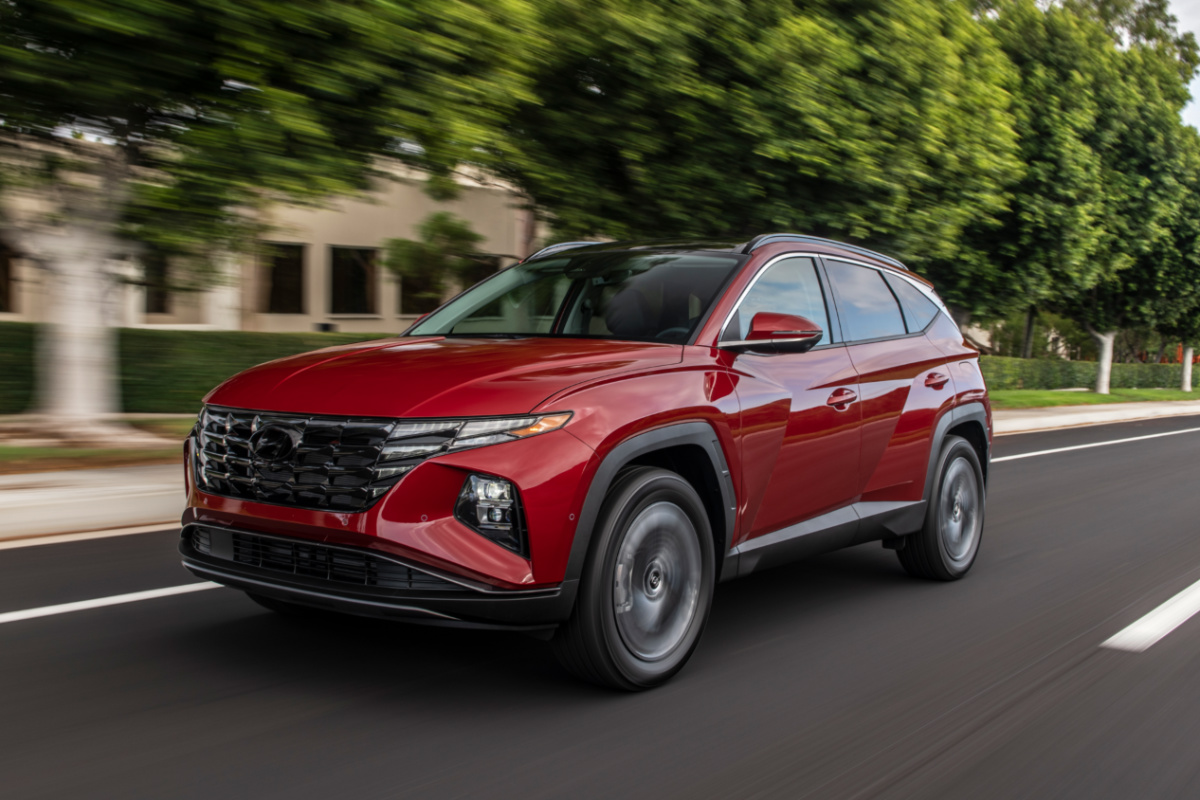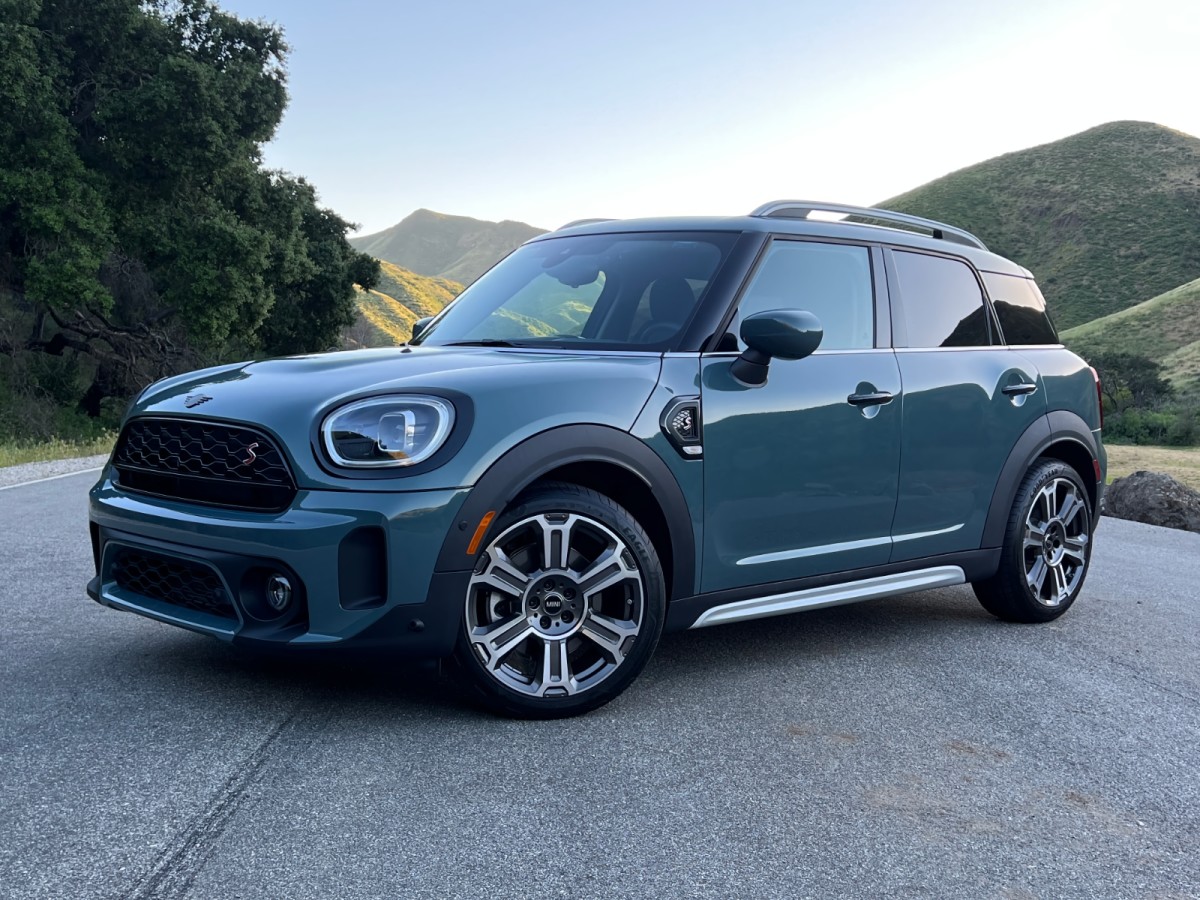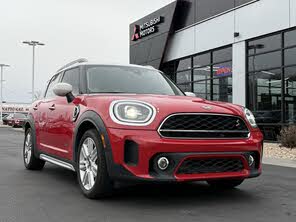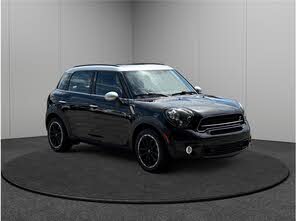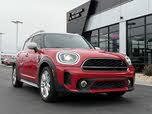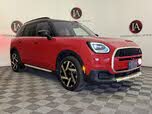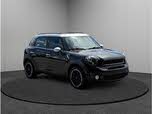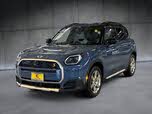Hyundai Tucson vs MINI Countryman
Overview | |
Years produced2005-Present | Years produced2011-Present |
MSRP$27,500 | MSRP$38,900 |
Listings9232 | Listings4958 |
Ratings & Reviews | |
User Reviews | User Reviews |
Expert reviews8.5 out of 10 | Expert reviews6.8 out of 10 |
Pros
Cons
| Pros
Cons
|
Reviews SummaryWith the growth and evolution of the compact SUV market, shoppers have seemingly endless options. And the growth of this segment has allowed for different models to grow in their own unique ways. The Mazda CX-5 is upscale and athletic, while the Ford Bronco Sport is a surprisingly capable off-roader. So what if you aren’t seeking a well-honed niche vehicle? What if you are looking for a small SUV that’s and overall great vehicle? The 2024 Hyundai Tucson answers that question as a well-rounded compact SUV that doesn’t excel in any one particular area, but instead covers a lot of what modern consumers demand out of their vehicle. This format is one that has been embraced by perennial segment standouts like the Toyota RAV4 and Honda CR-V. Verdict: The Tucson is a well-rounded small SUV and a good value. It does not shine in any particular area, instead blending good performance with a comfortable and spacious cabin, impressive tech and safety features, and an attractive price tag. | |
Reviews SummaryRedesigned this year, the 2025 Countryman grows in size but remains a small crossover SUV. Expressively styled, infused with parent company BMW’s engineering and technology, and packed with cheeky Mini quirks, the Countryman is available in Cooper S All4, John Cooper Works All4, and electric SE All4 model series, each equipped with standard All4 all-wheel drive (AWD). It can comfortably hold rear-seat passengers, carries a competitive amount of cargo, and remains fun to drive. Verdict: With prices starting at just over $40,000, the Mini Countryman sells in entry-level luxury territory. However, anyone expecting plush refinement will want to shop elsewhere because the Countryman is decidedly rough around the edges. We begrudgingly accept its quirks in exchange for its personality, but many people likely won’t. | |
No video found | |
Popular Features & Specs | |
Engine2.5L 187 hp I4 | Engine2.0L 241 hp I4 |
Drive TrainFWD | Drive TrainAWD |
Seating Capacity5 | Seating Capacity5 |
Horsepower187 hp @ 6100 rpm | Horsepower |
MPG City25 | MPG City24 |
MPG Highway32 | MPG Highway32 |
Engine | |
Engine Name2.5L 187 hp I4 | Engine Name2.0L 241 hp I4 |
Torque178 lb-ft @ 4000 rpm | Torque |
Horsepower187 hp @ 6100 rpm | Horsepower |
DrivetrainFWD | DrivetrainAWD |
Fuel Economy | |
MPG City25 | MPG City24 |
MPG Highway32 | MPG Highway32 |
Interior | |
Seating Capacity5 | Seating Capacity5 |
Key Features | |
Navigation System | Navigation SystemStandard |
Sunroof/Moonroof | Sunroof/MoonroofStandard |
Safety | |
Front Crash Overall5 | Front Crash Overall |
Side Crash Overall5 | Side Crash Overall |
Dimensions & Capacity | |
Cargo Space38.7 cu ft | Cargo Space25.0 cu ft |
Curb Weight3346 lbs | Curb Weight3777 lbs |
Height65.6 in | Height65.2 in |
Length182.3 in | Length175.0 in |
Width73.4 in | Width81.5 in |
Wheelbase108.5 in | Wheelbase106.0 in |
Maximum Payload1283 lbs | Maximum Payload1100 lbs |
Number of doors4 | Number of doors4 |
Maximum Towing Capacity2000 lbs | Maximum Towing Capacity3500 lbs |
Standard Towing Capacity2000 lbs | Standard Towing Capacity |
Overview | ||
Years produced | 2005-Present | 2011-Present |
MSRP | $27,500 | $38,900 |
Listings | ||
Ratings & Reviews | ||
User reviews | ||
Expert reviews | 8.5 out of 10Read full review | 6.8 out of 10Read full review |
Pros & cons | Pros
Cons
| Pros
Cons
|
Summary | With the growth and evolution of the compact SUV market, shoppers have seemingly endless options. And the growth of this segment has allowed for different models to grow in their own unique ways. The Mazda CX-5 is upscale and athletic, while the Ford Bronco Sport is a surprisingly capable off-roader. So what if you aren’t seeking a well-honed niche vehicle? What if you are looking for a small SUV that’s and overall great vehicle? The 2024 Hyundai Tucson answers that question as a well-rounded compact SUV that doesn’t excel in any one particular area, but instead covers a lot of what modern consumers demand out of their vehicle. This format is one that has been embraced by perennial segment standouts like the Toyota RAV4 and Honda CR-V. Verdict: The Tucson is a well-rounded small SUV and a good value. It does not shine in any particular area, instead blending good performance with a comfortable and spacious cabin, impressive tech and safety features, and an attractive price tag. | Redesigned this year, the 2025 Countryman grows in size but remains a small crossover SUV. Expressively styled, infused with parent company BMW’s engineering and technology, and packed with cheeky Mini quirks, the Countryman is available in Cooper S All4, John Cooper Works All4, and electric SE All4 model series, each equipped with standard All4 all-wheel drive (AWD). It can comfortably hold rear-seat passengers, carries a competitive amount of cargo, and remains fun to drive. Verdict: With prices starting at just over $40,000, the Mini Countryman sells in entry-level luxury territory. However, anyone expecting plush refinement will want to shop elsewhere because the Countryman is decidedly rough around the edges. We begrudgingly accept its quirks in exchange for its personality, but many people likely won’t. |
Video | No video found | |
Popular Features & Specs | ||
Engine | 2.5L 187 hp I4 | 2.0L 241 hp I4 |
Drive Train | FWD | AWD |
Seating Capacity | 5 | 5 |
Horsepower | 187 hp @ 6100 rpm | |
MPG City | 25 | 24 |
MPG Highway | 32 | 32 |
Engine | ||
Engine Name | 2.5L 187 hp I4 | 2.0L 241 hp I4 |
Torque | 178 lb-ft @ 4000 rpm | |
Horsepower | 187 hp @ 6100 rpm | |
Drivetrain | FWD | AWD |
Fuel Economy | ||
MPG City | 25 | 24 |
MPG Highway | 32 | 32 |
Interior | ||
Seating Capacity | 5 | 5 |
Key Features | ||
Navigation System | Standard | |
Sunroof/Moonroof | Standard | |
Safety | ||
Front Crash Overall | 5 | |
Side Crash Overall | 5 | |
Dimensions & Capacity | ||
Cargo Space | 38.7 cu ft | 25.0 cu ft |
Curb Weight | 3346 lbs | 3777 lbs |
Height | 65.6 in | 65.2 in |
Length | 182.3 in | 175.0 in |
Width | 73.4 in | 81.5 in |
Wheelbase | 108.5 in | 106.0 in |
Maximum Payload | 1283 lbs | 1100 lbs |
Number of doors | 4 | 4 |
Maximum Towing Capacity | 2000 lbs | 3500 lbs |
Standard Towing Capacity | 2000 lbs | |

By: CarGurus + AI
At CarGurus, our team of experienced automotive writers remain at the heart of our content operation, conducting hands-on car tests and writing insightful guides that are backed by years of industry experience. To complement this, we are harnessing AI to make our content offering more diverse and more helpful to shoppers than ever. To achieve this, our AI systems are based exclusively on CarGurus content, ratings and data, so that what we produce is both unique to CarGurus, and uniquely helpful to car shoppers.
